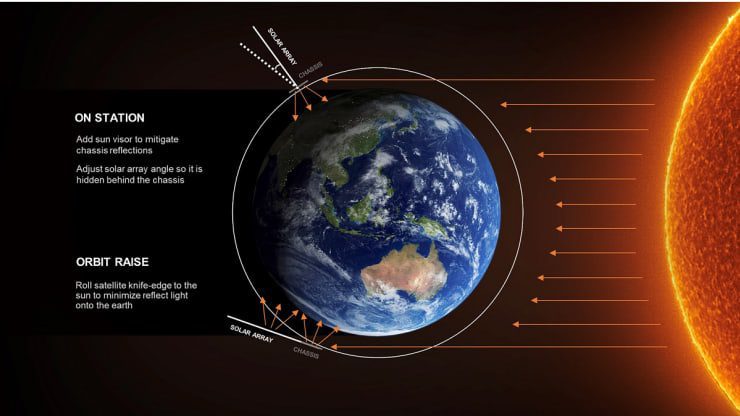From time to time, we get the question “what is that in the sky?” We’ve already covered the randomly moving lights and the too-good-to-be-true comet sighting, but sometimes, could it really be something further in space.
Over 6,500 satellites are orbiting Earth as of January 1st, 2021. Nearly half of these are inactive and occasionally fall to Earth in a last-blaze-of-glory as it burns up in the atmosphere. Most of these reentries of space junk occur over water.
The International Space Station
However, for the ones that are still active and still in orbit, like the International Space Station – we can see it with our naked eyes. The International Space Station (ISS) is a multi-nation laboratory, orbiting 248 miles (400 kilometers) above our heads.
The colossal structure reflects sunlight and appears as a bright white pinpoint of light in the sky. According to NASA, the ISS will typically be the brightest object in the sky (except for the moon) and can even be spotted from the middle of a city. The ISS zips around Earth at an average speed of 17,500 mph (28,000 km/h), completing 16 orbits per day.
The ISS is only visible because it reflects sunlight. It isn’t bright enough to be seen in the middle of the day and the best time to view the ISS is either at dawn or dusk. Viewing opportunities of the ISS can vary between one sighting a month to several a week, depending on your location and the orbit of the ISS.
NASA’s Spot the Station website is a great place to explore ISS sighting opportunities in your area. You can even sign up for email or text alerts for when the space station is flying over, so you’ll never miss a viewing opportunity again. Another good resource is using a sky tracker application like Night Sky, which alerts you on ISS flybys and many other celestial events.
The Starlink Constellation

On Tuesday, February 18th, 2020, there were several reports of “a line of stars moving” across the sky. This prompted stargazers to conclude that it may be drones, aircraft, UFOs to, even a soucouyant.
As are most things – there was a logical explanation. The line of lights was part of a satellite internet cancellation operated by SpaceX. SpaceX Chief Executive Elon Musk, in a January 15th tweet, said there were 1,469 satellites active, with 272 moving to operational orbits. SpaceX’s current Starlink constellation is authorized for 4,408 satellites, all in orbits at around 550 kilometers.
Though these SpaceX Starlink satellites aren’t large, they’re quite reflective and catch the sunlight, which is why they are illuminated across the night sky. Aiding their visibility, they’re also located in low orbit.
After many complaints from astronomers, the company outlined for astronomers its goals in reducing the brightness of the satellites. While Starlink satellites are visible to the naked eye while in orbit, SpaceX said its first goal is for the spacecraft to be “generally invisible to the naked eye within a week of launch,” as well as “for almost all phases of their mission.” Its second goal is to minimize Starlink’s impact on astronomy, “by darkening satellites, so they do not saturate observatory detectors.”
For those unchanged, brighter satellites that still orbit the Earth, if you ever see a uniform line of lights moving through the atmosphere, pull up FindStarlink before deciding it is a UFO.









